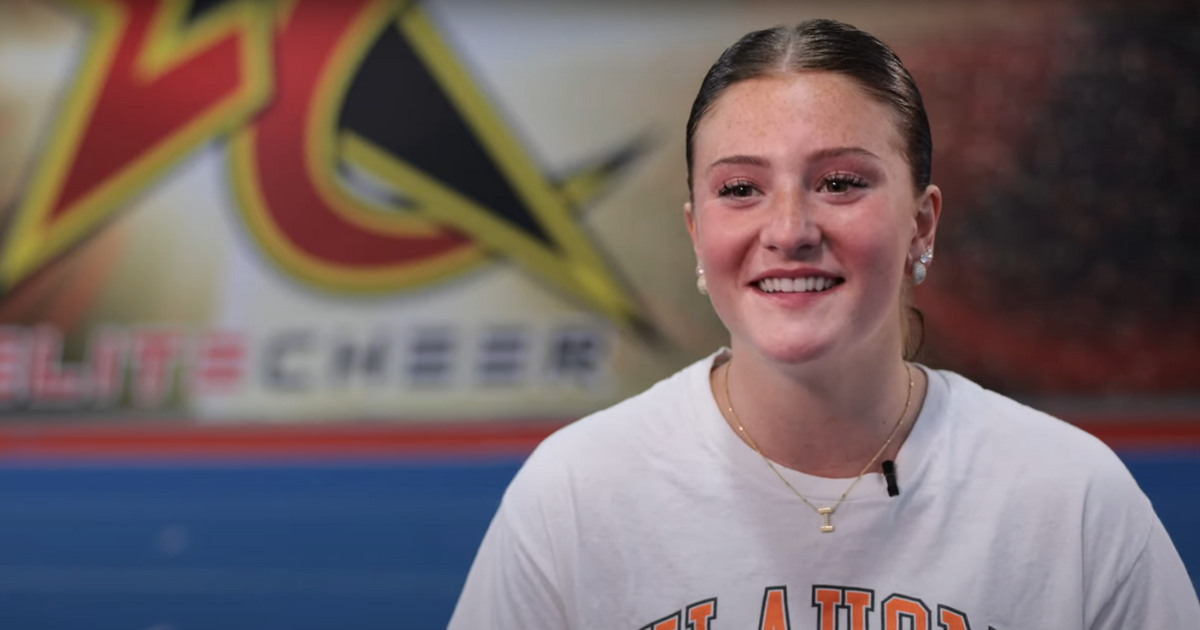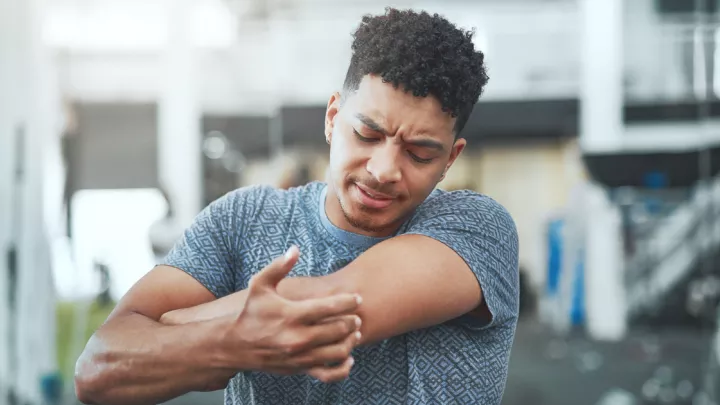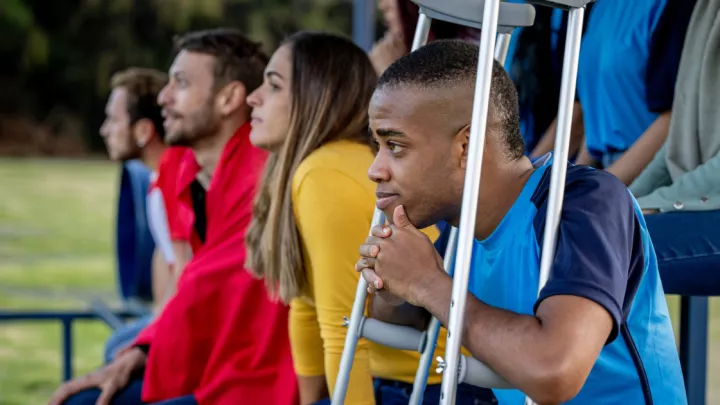Cheer athlete makes record recovery from Achilles tear

A sudden injury threatened to derail competitive cheer and stunt athlete Isabel Kleidosty’s dreams of competing at the collegiate level. However, thanks to innovative surgical techniques and her commitment to recovery, Kleidosty is thriving today.
An unexpected setback
During a November 2023 Elite Cheer event, Kleidosty was performing a sequence of moves that included a “whip,” a high-level tumbling maneuver that requires athletes to powerfully push off the ground to generate momentum.
"I have done a two-to-whip-double more times than I can think about," Kleidosty says. "I did two back handsprings, I punched for my whip, and my foot just went numb. I felt like I had been kicked in the back of the leg super hard."
The severity of the injury was immediately apparent. “I couldn’t move my foot, my toes wouldn’t move,” Kleidosty says. “I was in so much shock and was freaking out. Everyone said, ‘Go to the hospital right now!’”
For the Westside High School senior and accomplished athlete, a multiple award-winner with the competitive team Elite Cheer Stars, the injury jeopardized her hoped-for future in college athletics.
Innovative surgical approach
Kleidosty’s chiropractor, Steve Stonebraker, referred her to Nebraska Medicine sports medicine physician and orthopaedic surgeon Matthew Tao, MD, who quickly diagnosed the issue. “He started feeling around my foot and said, ‘You have a torn Achilles,’” Kleidosty says.
Dr. Tao recognized the urgency of the situation and performed surgery the same day using a “speed bridge” procedure. This technique, which gained attention following New York Jets quarterback Aaron Rodgers' similar injury in 2023, is designed to expedite the recovery process.
"That technique of fixing it has actually been around for quite a while," Dr. Tao says. "It's a technique I've used for almost all my Achilles repairs in the last five or six years. As a surgeon, it makes us feel better about loading that ankle earlier, meaning that patients get quicker muscle recovery and return of function."
Breaking recovery records
What followed was nothing short of remarkable. While Achilles tear recovery typically takes nine to 12 months, Kleidosty’s dedication to rehabilitation led to an unprecedented comeback – Dr. Tao cleared her just seven months after her surgery. "No question it was the quickest and best Achilles recovery that I've had,” he says. “I told her that I think Aaron Rogers should want what she has and not the other way around."
Kleidosty’s competitive spirit played a huge factor in her recovery. "Every day in physical therapy, I was doing as much as I could to get better,” she says. “When I got hurt, I told myself, ‘I'm going to do everything I can to make sure that I'm back to where I was before.’"
In addition to her hard work, Kleidosty credits her recovery to her strong relationship with Dr. Tao. "He was amazing from the get-go," she says. "When he told me what happened, he played it off to be so easy. He was like, 'I'm going to go in, I'm going to put it back together, put some pins in you here, and you're going to be done with surgery.'"
Dr. Tao's approach combined careful medical management with understanding his patient's athletic goals. "Isabel has been fantastic – she's done exactly what we've asked her to do. She was careful when I asked her to be careful, and she pushed it when I asked her to push it. She has truly been a joy to work with as I have gotten to know her and her family. And she exemplifies our goals in Sports Medicine – to get you back safely, efficiently and at a high level."
Looking ahead
After recovering, Kledisosty signed with her top college pick, Oklahoma State University, whose competitive stunt team is known for its multiple national championships. For athletes facing similar injuries, her journey demonstrates that extraordinary comebacks are possible with the proper medical care, dedication to rehabilitation and an unwavering spirit.







